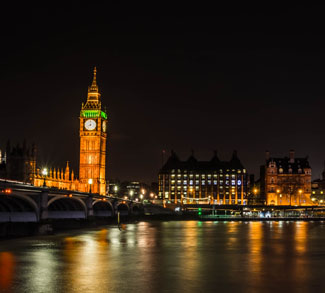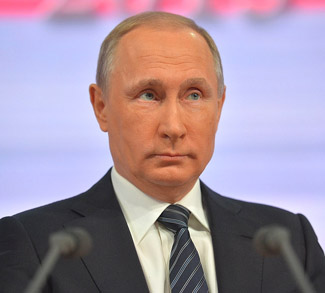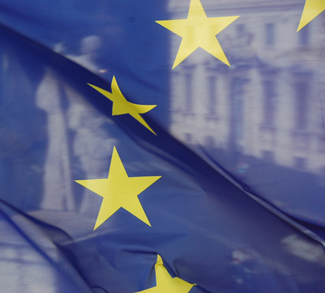As the result of the Brexit referendum came in, it inflicted breathtaking astonishment on the so-called experts in the major media outlets and the political establishment. Yet another of their predictions failed to materialize. From the unforeseen and meteoric rise of the so-called Islamic State (IS) in 2014 – although rise of a ‘salafist principality’ was predicted by certain segments of the US military intelligence beforehand according to US-based judicial watchdog group Judicial Watch – to the unexpected and much ridiculed success of the Trump campaign since the summer of 2015, the world of establishment analysis continues to demonstrate how repeatedly they have been betrayed by reality in recent times. The usual explanation of this phenomenon is that the post-World War II international order is hurling towards dissolution at an ever-accelerating speed. Manifesting crises and chaos, it seems that what the next six months of 2016 holds for all of us is ultimately anyone’s guess, however informed and educated a prediction may be.
As political and financial chaos ensue (Friday June 24 experienced a global equity loss exceeding $2 trillion, the worst in history, and US stocks have plummeted 900 points since the event before recovering), Great Britain is taking a step away from being chained to the bureaucracy-led affairs across the Dover Strait. This is a process that can also be interpreted as Great Britain returning itself to a more traditional form of the ‘offshore balancer’ of the European continent, and even more so if the EU were to totally dissolve. Scottish leaders have urged secession of their own from Great Britain, wishing to cast their fate with the European Union, whereas many disgruntled ‘Remainers’ have been requesting for a re-run of the referendum. Meanwhile a domino effect of the Brexit has been on the mind of international leaders.
Populist movements have been brewing across the EU landscape, dissatisfied with the Brussels bureaucrats’ gulf from the general public, on issues from economy to mass immigration. The efforts of the citizens of the (currently) eight states considering referendum for their own secession will not be a cake walk. These states are wedded deeper to the EU system than Great Britain. The British retained their pound currency instead of adopting the euro. Even more, a total EU break-up would be catastrophic, at least initially, due to its global financial repercussions.
Not only Western European states, but a host of Eastern European capitals are desiring more decision making powers to be returned from the EU. This would multiply geopolitical risks in all likelihood, making Brexit look like a waltz contest in a ballroom. Even if only France were to exit the EU, in the event of the success of the right-populist party Front National led by Marine Le Pen in the upcoming 2017 election, this itself may ultimately unravel the EU. This would leave Germany as the sole EU major power without France to counter-balance it, a situation that other EU states would most likely not tolerate. The implication for security issues also abound– ISIS operatives celebrated Brexit as a chance for new wave of terror strikes, and struck Istanbul’s Ataturk Airport on June 28. Although as of June 30 no entity has claimed responsibility for the attacks, CIA director John Brennan has stated that the attacks possess hallmarks of ISIS terror. Turkish officials released analyses that the terrorists were from Russia, Uzbekistan, and Kyrgyzstan, and that the ISIS high command was involved in the scheming of the bloodbath. The tension between Turkey and ISIS now is escalating to a boiling point and the two are on brink of war.
As the world sees no stability in sight new political movements and parties will form, new regimes will be established, and new military and economic alliances will be tied.
In the long-term however, the Brexit may be beneficial to Great Britain, especially in the realm of international finance anchored in the City of London. Great Britain may pursue a strategy of promoting the City’s financial products – with its foundation in the globe-spanning financial networks, built with geopolitical considerations since the 19th century – even more now that it has casted itself away from the regulation-heavy EU. With a breathtaking 53 states being part of the Commonwealth of Nations, the possibility remains that this network asset would be harnessed and put to good use. Despite distancing itself from supranationalism of the sovereignty-circumscribing EU, Great Britain may forge a new economic arrangement with partners across the globe, entered freely (hopefully, that is) and with less bureaucratic regulation.
As the existential situation in the EU makes apparent, considerable number of citizens in Western states are seeking passionately for decentralization, autonomy, and resiliency in this ever-complex and interconnected world. Plummeting trust in existing institutions, regionalism, and localism is on the rise. The local over the national, and national interest over international bureaucracy are being pursued with astonishing vigor. The idea that handful of dark-suited bureaucrats in distant places know what is best for the locals (or even institutionally capable of implementing such policies) is often met justifiably with harsh skepticism. The manner in which the West sees itself has tectonically shifted since the beginning of the 21st century.
Despite the explosions of these political movements have gained traction in last several years, the trend of emphasizing the region and the local has been taking place also in another form, since the Great Recession of 2008, in what has been increasingly characterized as ‘metropolitan revolution’ as well.
Metropolitan areas, the theater of this 21st century revolution, are not just functioning as nodes of economic output within a state’s territory, which has been the case for centuries. These areas are now becoming more involved in gravitational points of politics within states in terms of policy agenda setting. They’re also becoming foundational birthplaces of the new 21st century tech-driven digital economy. Cities are where the entrepreneurs gather. It is where the resources – both state-led and private investments – are concentrated both intentionally and as part of natural/social process of positive feedback. And due to rise of these sub-state areas, not only country-risk analysis is paramount, but also analyzing regional and urban areas of the countries in detail are increasingly becoming important as well.
Urban environments is also where populations globally are increasingly being attracted to, resulting in millions of internal movements of populations to the cities from the rural regions. In 1950, only 29% of the world lived in cities while it has been estimated that now over half of world population lives in cities. And the concentration is expected only to increase in the coming decades if the current trend continues. According to study released by McKinsey Global Institute in 2011, 600 cities – predominantly middle-scale cities in the “emerging economies”– are forecasted to produce 60% of global growth to 2025.
New York City and Los Angeles are quite given, but Atlanta, Denver, and Minneapolis are all considered to be rising American metropolitan areas. The Kansas City Metropolitan area in the United States, which I call home, also is aiming to participate in the metropolitan revolution seeking to become a greater player in national and international affairs. Known internationally for its own style of jazz, its claim for the galactic capital of Barbecue (and although less well-known, for the underworld rule of a Sicilian mafia family in the last century), the Kansas City metropolitan is located on the Missouri River at the Kansas-Missouri border. It is also located at the cross point of Interstate 70 (which links Maryland and Utah) and Interstate 35 (which links Texas and Minnesota), and its potential for having a great role to play in future commerce is immense. The Google Fiber service (broadband and cable TV service) was launched in the metropolitan in 2010, and now projects for further business expansion into other major US cities are in the works.
With Kansas City Royals’ 2015 World Series victory against the New York Mets once again putting the metropolitan on the map, the ever-humble Kansas Citians are now even more worthy of becoming more assertive. And now, the city has remodeled itself as the “World’s most connected Smart City,” and hosted the Gigabit City Summit 2016 this May. On 6th of the same month, grand debut of the KC Street Car was held, making it a “first step in a longer-range plan to create a regional, integrated transit system” for the metropolis. From free public Wi-fi to Community Kiosks placed throughout the downtown Kansas City area, Kansas City, Missouri, the core of the metropolitan area, is striding to become a model for future smart-and-connected urban development.
Looking abroad, Jakarta– Indonesian capital and the most congested on the planet– has transformed itself into a Smart City emphasizing efficient interactions between the citizenry and the municipal government. Allying with Google, the Jakarta government introduced apps such as QLUE to report problems to facilitate quick response from government officials. Vienna, Barcelona, Paris, Hong Kong and London are also among those considered to be smart cities, as well as Toronto, the base of Geopolitical Monitor. They are all globally-influential cities, and Kansas City metropolitan area is aiming to become a Global City as well.
However with all its perks and strengths, the ‘shadows’ of these Global Cities persist simultaneously also, touching the realms of both national and international security. Some cities are ill-equipped to deal with mass migration into the urban areas, resulting in informal settlements in some cases. This in turn can subsequently lead to the formation of unofficial or underground parallel economies. Terrorist organizations are able to plant cells and networks in the urban environment, as well as criminal organizations such as gangs, which in turn make the use of the urban areas as transit points and hubs of illegal trafficking networks. (However it has been interestingly pointed out that Mafia criminal enterprises have had decisive impact in sponsoring Jazz musicians in New Orleans, building Las Vegas, and investing in New York Broadway.) Increasing emphasis on urban warfare by military and security establishments underscore the primary concern of the state regarding the ‘threats’– however defined– arising from urban environment both street-level surface and underground infrastructures, leading to increasing formulation of relevant military policies and contingency plans.
This decade has seen a fair share of civil unrest across the globe. South Africa, a member state of the BRICS, experienced some violence related to the coming election near the executive capital city of Pretoria in June 2016, fueled by political and economic uncertainty. Also while some of this global unrest is ideological (such as some anti-Trump riots being inspired by Marxist ideology), a food security game sponsored by CNA Analysis and Solutions, a US Navy contractor, simulated in November 2015 a possibility that in the coming decade the food prices would spike by 395%, which in turn engender food-security related civil riots. As the so-called Arab Spring has been suspected of having one of its fuses lit from the commodity price/hunger crisis that wrecked the MENA region beginning in 2008 (price surge also affecting 30 countries globally), the coming food crises predicted recently by the Global Footprint Network (GFN) and United Nations Environment Programme (UNEP) may also trigger massive unrests that may ultimately redraw geopolitical map as well. Global food supply system and its complex interconnectivity also put the connected parts into vulnerable position vis-a-vis wild price fluctuations. Resiliency and decentralization and distribution of certain food products may become a key to lessening the impact of such possible crises, and metropolitan revolution accompanied with technological innovation may have the capacity to address this problem.
In this sense, Global Cities are like the two-headed Janus, functioning both as ground zeros of innovation and creativity, and those of destruction and instability. As the growing renewable energy sector has demonstrated this past 6 months by weathering the global oil price downfall and even receiving increasing investments, the industry possesses a promising potential even in the face of chaotic international scene. Even the OPEC giant Saudi Arabia is slowly shifting away from oil dependency to renewables. In this globally unstable environment for energy security, Global Cities may pursue projects for integrating certain renewable sources of energy as a part of diversification strategy to strengthen resiliency in event of crisis.
However renewable energy choices can vary according to geographic factors of the metropolitan areas. Additionally even if desirable choices are available, involved parties should be aware of side-effects of energy production intended to pursue. Ethanol production causing the surge in food prices was one of the causes that led to the uprisings of the so-called Arab Spring.
As the world sees no stability in sight new political movements and parties will form, new regimes will be established, and new military and economic alliances will be tied. States will expand and contract and new forms of empires will form and dissolve. Think People’s Republic of China, an expansionist power, which is actively engaging in to restore the long-lost Ming Dynasty. Although there are serious rifts in Chinese society (the disparity of the coastal urban areas and the internal regions, as well as the 2014 Umbrella Revolution being some examples), and the Beijing bureaucracy and the military, it does not seem as overtly manifesting itself as the situation in the EU, as of yet. It is bit of an irony to the Brexit that according to an informal poll that was taken in Hong Kong this march, whopping 92% of Hong Kongers would like to return to British rule.
Even as the importance of the Global Cities and their networks will be established, so will the geopolitical importance of the state and its apparatus. This is especially for domestic defense and protection of trade routes. Geopolitically speaking, Great Britain was a commercial empire because of its Royal Navy, and that role was taken over by the United States in the post-war era. Privatization for these are yet to be seen despite having been advocated by some libertarian-minded theorists. The state can be counted on to protect these Global Cities, its ‘crown jewels.’
Despite trend of decentralization in the United States, many of the urban development projects have been funded or sponsored by the state as part of their global and regional strategy. This is especially telling in the MENASA region. Whether it be Dubai of the United Arab Emirates (which is hosting the 2020 World Expo as a sort of ‘coming out’ party), King Abdullah Economic City in Saudi Arabia, New Cairo project launched in Egypt or India’s Delhi Mumbai Industrial Corridor Project, these projects are state-sponsored, thus demonstrating that rise of Global Cities does not necessarily negate the state’s geopolitical interest in involving itself in urban projects. After all, strengthening of the domestic economy and resiliency not only benefit the state but often translates to power projection abroad. Needless to point out, most global capitals are located within one of its major cities, as matter of strategy. Although there often are tensions between the urban and the state, there also are give-and-take relationships.
As long as we humans live out our existence on earth, with its resources distributed unevenly, extracted and transported via infrastructures bound by geographic factors, importance of the state and geopolitics will long endure even in the face of the metropolitan revolution. And preparing for risks that will accompany events will endure as well.
Decentralization and secession, if successful, may shuffle things around, but state-based (so-called Westphalian) arrangement of international relations at its fundamental level will most likely persist in the future unless the world faces a system-altering catastrophe much like the Thirty-Year War (ie. World War III). Although the current rise of the Global Cities have been likened to those of the ancient city-states or the 14th century Hanseatic League, the city-state of Singapore deems itself a republic and conducts domestic and international political affairs in a structure common across rest of the states on the planet.
Meanwhile, despite all the shortcomings, scandals and tyrannies that can potentially be produced by state institutions, we can hope that the accelerating rise of domestic and international metropolitan networks, and technological ideas and innovations that flow from them, will bring not only excitement but improve the living standards to the millions of lives who are touched by them, this even in the simmering face of chaotic disruptions that we may face in the coming years.
The opinions, beliefs, and viewpoints expressed by the authors are theirs alone and don’t reflect any official position of Geopoliticalmonitor.com.




